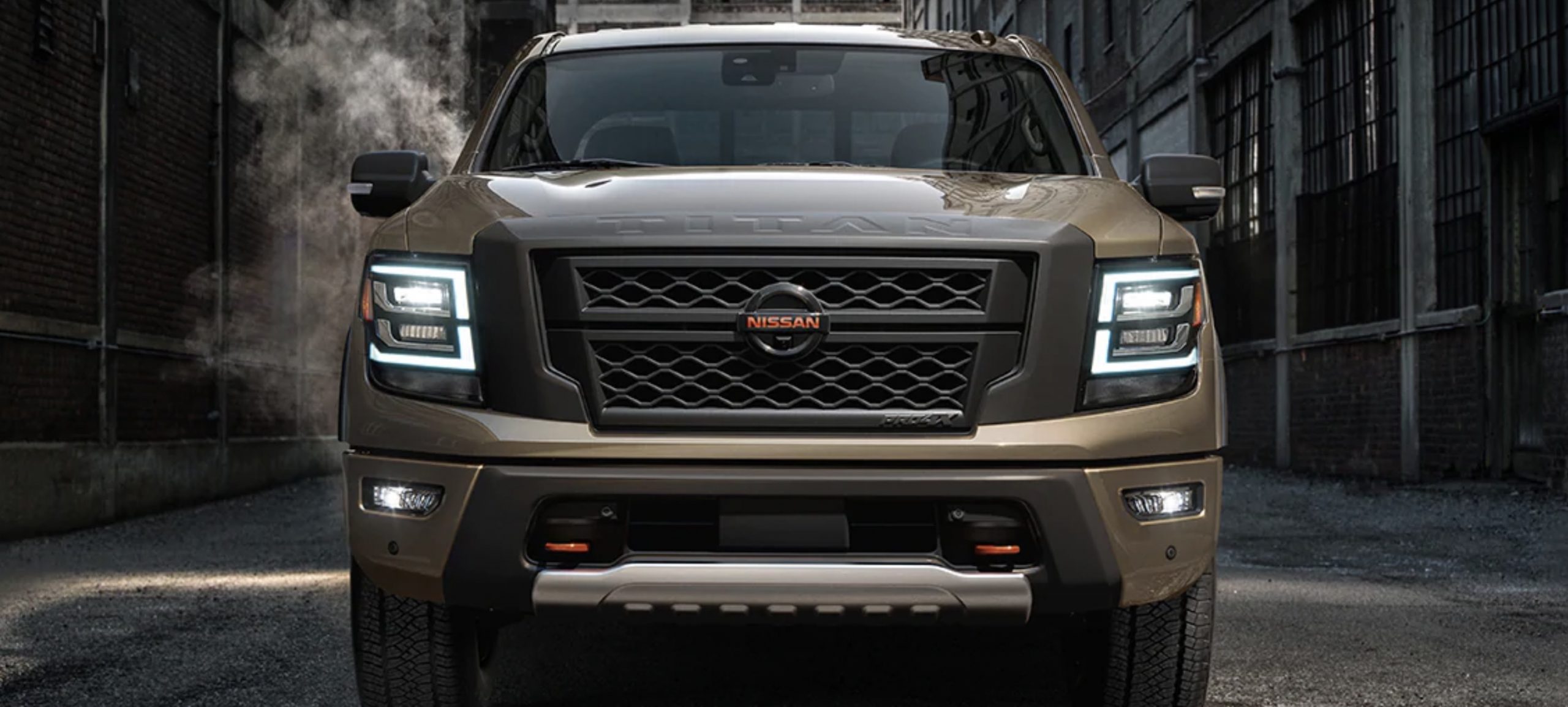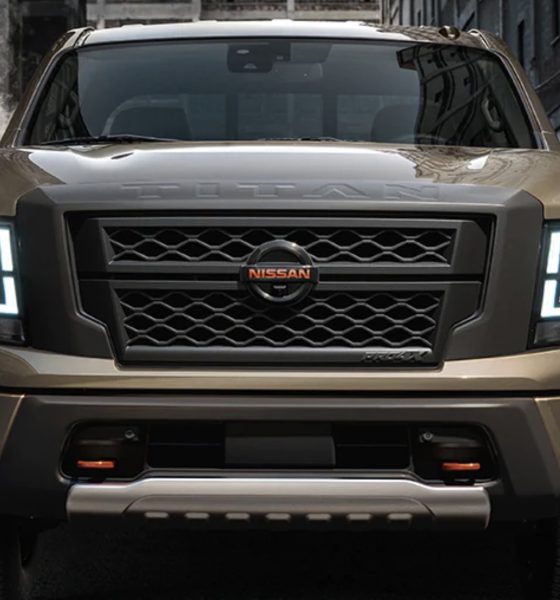After Nissan announced plans to exit the full-size pickup segment in 2024, rumors have continued to circulate about the automaker’s consideration of a light-duty electric truck. While the Japanese automaker doesn’t expect to enter the electric pickup market anytime soon, company executives say Nissan will eventually need to go electric in the truck segment.
During the Japan Mobility Show on Wednesday, Nissan Global Product Strategy Executive Ivan Espinosa told Automotive News that the automaker plans to continue investing in a future pickup. However, Espinosa says an electric pickup won’t hit the market anytime soon — despite the company’s continued investments.
“One thing you can be sure about is we’re going to keep investing in the truck segment,” Espinosa said. “How do we evolve … is the question that we are discussing internally. Eventually, we will have to electrify the truck.”
Despite the statements, Espinosa refused to formally comment on product plans. Instead, he pointed to the fact that U.S. automakers have been hard to beat in the full-size pickup market.
“You have competitors doing 700,000 trucks a year,” Espinosa said. “So it’s a bit of a difficult space to play now.”
Nissan sold 76,183 Frontier mid-size trucks in the U.S. last year, so a future electric Frontier wouldn’t seem beyond the automaker’s long-term ambitions.
However, electric pickups won’t be the first EVs to roll out, according to Espinosa. Additionally, previous rumors have suggested that the automaker wouldn’t bring an electric pickup to market until 2030.
“The demand for electrification is concentrating today much more on the C-SUV and D-SUV [segments],” Espinosa added. “These are the ones that you will start seeing rolling into first. And I see trucks a little bit on the later stage.”
I really hope the future of cars is actually close to the concept cars big auto makes. Look at this Nissan car just unveiled here in Tokyo. #nissan #JapanMoblityShow pic.twitter.com/Nwga7qTrV1
— WHAT'S INSIDE? (@whatsinside) October 25, 2023
The statements come as the electric pickup segment emerges with new contributions like the Rivian R1T and the forthcoming Tesla Cybertruck, as well as larger electrified trucks from Ford, Chevrolet and GMC, among others. It also comes as Nissan has unveiled a few concept EVs at Japan Mobility, including the above-pictured Nissan Hyper Force.
Along with ending production of the Titan in 2024, Nissan has announced plans to phase out the Leaf electric vehicle (EV), which was one of the earliest battery-electric cars to be introduced to global markets.
The automaker has also faced production stalls and other issues with the production of the Nissan Ariya, though it increased the number of EVs it hopes to debut by 2030 to 19 from 15 earlier this year.
With plans to make 40 percent of its sales fully electric in the U.S. by 2030 and a renewed ambition in the EV space, many have speculated around the subject of an electric pickup from the automaker. Nissan was also reportedly considering the idea of a Titan EV back in 2020, though the automaker will now exit the full-size pickup market with the Titan ending production next year.
Nissan Dealer Board Chairman Tyler Slade told Automotive News a few months ago that the automaker would want to make a $40,000 electric pickup rather than competing directly with more expensive, larger EV trucks.
“They don’t want to be in the Rivian or the [Tesla] Cybertruck space,” Slade said. “They want to be in the affordable $40,000 range.”
Tesla and Nissan agree to NACS compatibility in most recent adoption
What are your thoughts? Let me know at zach@teslarati.com, find me on X at @zacharyvisconti, or send your tips to us at tips@teslarati.com.

Elon Musk
Elon Musk and Tesla AI Director share insights after empty driver seat Robotaxi rides
The executives’ unoccupied tests hint at the rapid progress of Tesla’s unsupervised Robotaxi efforts.

Tesla CEO Elon Musk and AI Director Ashok Elluswamy celebrated Christmas Eve by sharing personal experiences with Robotaxi vehicles that had no safety monitor or occupant in the driver’s seat. Musk described the system’s “perfect driving” around Austin, while Elluswamy posted video from the back seat, calling it “an amazing experience.”
The executives’ unoccupied tests hint at the rapid progress of Tesla’s unsupervised Robotaxi efforts.
Elon and Ashok’s firsthand Robotaxi insights
Prior to Musk and the Tesla AI Director’s posts, sightings of unmanned Teslas navigating public roads were widely shared on social media. One such vehicle was spotted in Austin, Texas, which Elon Musk acknowleged by stating that “Testing is underway with no occupants in the car.”
Based on his Christmas Eve post, Musk seemed to have tested an unmanned Tesla himself. “A Tesla with no safety monitor in the car and me sitting in the passenger seat took me all around Austin on Sunday with perfect driving,” Musk wrote in his post.
Elluswamy responded with a 2-minute video showing himself in the rear of an unmanned Tesla. The video featured the vehicle’s empty front seats, as well as its smooth handling through real-world traffic. He captioned his video with the words, “It’s an amazing experience!”
Towards Unsupervised operations
During an xAI Hackathon earlier this month, Elon Musk mentioned that Tesla owed be removing Safety Monitors from its Robotaxis in Austin in just three weeks. “Unsupervised is pretty much solved at this point. So there will be Tesla Robotaxis operating in Austin with no one in them. Not even anyone in the passenger seat in about three weeks,” he said. Musk echoed similar estimates at the 2025 Annual Shareholder Meeting and the Q3 2025 earnings call.
Considering the insights that were posted Musk and Elluswamy, it does appear that Tesla is working hard towards operating its Robotaxis with no safety monitors. This is quite impressive considering that the service was launched just earlier this year.
Elon Musk
Starlink passes 9 million active customers just weeks after hitting 8 million
The milestone highlights the accelerating growth of Starlink, which has now been adding over 20,000 new users per day.

SpaceX’s Starlink satellite internet service has continued its rapid global expansion, surpassing 9 million active customers just weeks after crossing the 8 million mark.
The milestone highlights the accelerating growth of Starlink, which has now been adding over 20,000 new users per day.
9 million customers
In a post on X, SpaceX stated that Starlink now serves over 9 million active users across 155 countries, territories, and markets. The company reached 8 million customers in early November, meaning it added roughly 1 million subscribers in under seven weeks, or about 21,275 new users on average per day.
“Starlink is connecting more than 9M active customers with high-speed internet across 155 countries, territories, and many other markets,” Starlink wrote in a post on its official X account. SpaceX President Gwynne Shotwell also celebrated the milestone on X. “A huge thank you to all of our customers and congrats to the Starlink team for such an incredible product,” she wrote.
That growth rate reflects both rising demand for broadband in underserved regions and Starlink’s expanding satellite constellation, which now includes more than 9,000 low-Earth-orbit satellites designed to deliver high-speed, low-latency internet worldwide.
Starlink’s momentum
Starlink’s momentum has been building up. SpaceX reported 4.6 million Starlink customers in December 2024, followed by 7 million by August 2025, and 8 million customers in November. Independent data also suggests Starlink usage is rising sharply, with Cloudflare reporting that global web traffic from Starlink users more than doubled in 2025, as noted in an Insider report.
Starlink’s momentum is increasingly tied to SpaceX’s broader financial outlook. Elon Musk has said the satellite network is “by far” the company’s largest revenue driver, and reports suggest SpaceX may be positioning itself for an initial public offering as soon as next year, with valuations estimated as high as $1.5 trillion. Musk has also suggested in the past that Starlink could have its own IPO in the future.
News
NVIDIA Director of Robotics: Tesla FSD v14 is the first AI to pass the “Physical Turing Test”
After testing FSD v14, Fan stated that his experience with FSD felt magical at first, but it soon started to feel like a routine.

NVIDIA Director of Robotics Jim Fan has praised Tesla’s Full Self-Driving (Supervised) v14 as the first AI to pass what he described as a “Physical Turing Test.”
After testing FSD v14, Fan stated that his experience with FSD felt magical at first, but it soon started to feel like a routine. And just like smartphones today, removing it now would “actively hurt.”
Jim Fan’s hands-on FSD v14 impressions
Fan, a leading researcher in embodied AI who is currently solving Physical AI at NVIDIA and spearheading the company’s Project GR00T initiative, noted that he actually was late to the Tesla game. He was, however, one of the first to try out FSD v14.
“I was very late to own a Tesla but among the earliest to try out FSD v14. It’s perhaps the first time I experience an AI that passes the Physical Turing Test: after a long day at work, you press a button, lay back, and couldn’t tell if a neural net or a human drove you home,” Fan wrote in a post on X.
Fan added: “Despite knowing exactly how robot learning works, I still find it magical watching the steering wheel turn by itself. First it feels surreal, next it becomes routine. Then, like the smartphone, taking it away actively hurts. This is how humanity gets rewired and glued to god-like technologies.”
The Physical Turing Test
The original Turing Test was conceived by Alan Turing in 1950, and it was aimed at determining if a machine could exhibit behavior that is equivalent to or indistinguishable from a human. By focusing on text-based conversations, the original Turing Test set a high bar for natural language processing and machine learning.
This test has been passed by today’s large language models. However, the capability to converse in a humanlike manner is a completely different challenge from performing real-world problem-solving or physical interactions. Thus, Fan introduced the Physical Turing Test, which challenges AI systems to demonstrate intelligence through physical actions.
Based on Fan’s comments, Tesla has demonstrated these intelligent physical actions with FSD v14. Elon Musk agreed with the NVIDIA executive, stating in a post on X that with FSD v14, “you can sense the sentience maturing.” Musk also praised Tesla AI, calling it the best “real-world AI” today.










